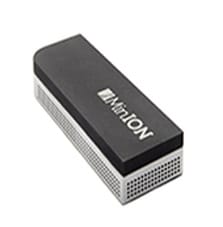MinION Data from Human Gene Sequencing Released

University of Toronto scientists have released data on the first reported use of Oxford Nanopore’s MinION to sequence human DNA.
With a low throughput sequencing rate, the device is not recommended for sequencing high complexity genes. Its best suited and recommended for low complexity bacterial, viral and simple eukaryote gene sequencing. However, the researchers believe that MinION’s long read profile can be used for narrow applications in human genetics for filling gaps in regions with tandem repeats or areas with low complexity.
The team lead by Gary Bader focused on human diagnostic applications in clinical research, which most laboratories are not able to afford. Haplotypes are often critical for the interpretation of genetic laboratory observations into medically actionable findings. MinION sequencing was applied to genes CYP2D6, HLA-A and HLA-B and compared with the well characterized NA12878 cell line. Although MinION was able to sequence and haplotype the three genes, its high error rate lead to many false positives, which remains a concern.
Oxford Nanopore’s USB drive sized MinION is currently out on early trial basis to a select few university and its researchers. Other researchers have released early data on bacterial and viral gene sequecing, however the high error rates remain a concern.
Source: Ammar R, Paton TA, Torti D et al. Long read nanopore sequencing for detection of HLA and CYP2D6 variants and haplotypes [v1; ref status: awaiting peer review, http://f1000r.es/4zj] F1000Research 2015, 4:17 (doi:10.12688/f1000research.6037.1)

